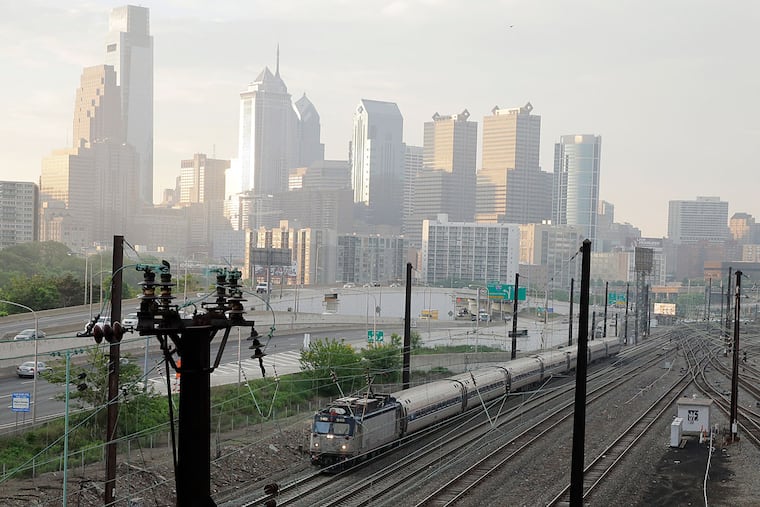30th Street Station part of proposal to transform neighborhood
The massive rail yard at 30th Street Station would be partially capped under an evolving proposal to transform the area into a vibrant new neighborhood linking Center City with West Philadelphia.

The massive rail yard at 30th Street Station would be partially capped under an evolving proposal to transform the area into a vibrant new neighborhood linking Center City with West Philadelphia.
This framework also calls for three new pedestrian bridges over the Schuylkill, ample public space around the station and along the river, a revamped station building with more shopping, and a new transit center for intercity bus routes and expanded rail service.
The draft, to be unveiled Wednesday during an open house at the station, integrates public responses to previously proposed alternatives for the so-called 30th Street Station District Plan being devised by Amtrak, Drexel University, SEPTA, Brandywine Realty Trust, and others.
Its release is the latest step in a $5.25 million planning study covering 175 acres between Walnut and Spring Garden Streets east of Drexel's campus and Powelton Village.
"The framework is the bones of what will be the future vision," said Natalie Shieh, project director. "Where the street networks will be, where transportation improvements will be, where will be developed, where will there be parks."
By summer, planners expect the process to have yielded specific plans to guide development through 2040, Shieh said.
The latest draft was based on public input calling for a dense neighborhood of homes and offices at the site now dominated by the rail yard, she said.
Public comment also favored capping most of the 80-acre section of the rail yard within the project area, but in the framework being released Wednesday, only about 70 acres are covered, due to engineering challenges, Shieh said.
Still, the exposed sections, mostly along the western edge, will be partially traversed by parks and pedestrian bridges to forge a connection with adjacent neighborhoods, she said.
Other elements include a new commercial district north of the station, anchored by a transit terminal for intercity bus operators such as Megabus and expanded railways that could support high-speed service.
"SEPTA is looking at connections for our customers as part of our overall agenda of better access to and from the Amtrak main station," said Byron Comati, the regional transit agency's director of strategic planning and analysis.
Drexel senior vice president Keith Orris said in a statement, "This project leverages the alignment of a number of factors: Philadelphia's resurgence as a vibrant urban core and ranking as the number-one millennial city in the country, the resurgence of rail travel, and Drexel's expanding reputation as a national research university with an applied education model."
He added, "Together these projects will create an incredible gateway to Drexel's campus and University City, and provide decades of economic opportunity for Philadelphia."
The draft also calls for an underground interchange between 30th Street Station and the Market-Frankford Line, as well as an aboveground right-of-way for new public transit routes through the proposed development. No decision has been made on what form that would take.
The next stages of planning will break the development proposals into phases, while establishing a timeline and a budget for their completion, Shieh said.
The objective, she said: "A vision bold enough to inspire, but pragmatic enough for people to imagine it could happen."
215-854-2615
Staff writer Jason Laughlin contributed to this article.